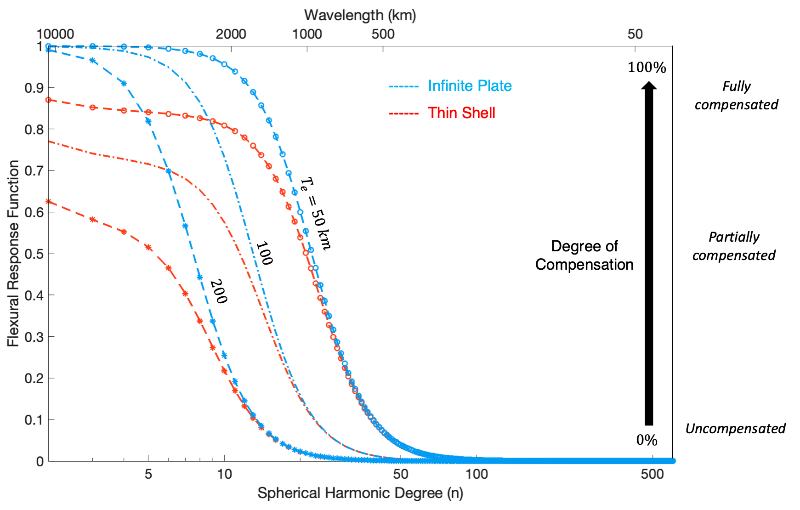A re-analysis of the lithospheric flexure on Mars
- 1Delft University of Technology, Aerospace Engineering, Space Engineering, Delft, the Netherlands
- 2Delft University of Technology, Civil Engineering and Geosciences, Geoscience and Remote Sensing, Delft, the Netherlands
- 3Utrecht University, Geosciences, Earth Sciences, Utrecht, the Netherlands
Mars hosts the largest volcano in our solar system, Mons Olympus. This volcano is part of a huge volcanic complex, named Tharsis Rise, which is situated several kilometers higher than the average surface. Flexural isostasy is commonly used to understand the relationship between observed topography, crustal structure, and gravity, revealing structures that support the volcanic complex.
After NASA’s Insight mission, new information about the Martian lithosphere has been discovered, which deserves a re-analysis of the lithosphere flexure models. Our study of Mars suggests that the red planet has a rigid lithosphere. Mars is smaller than the Earth, resulting in a stronger curvature. Therefore, the lithosphere is best modeled with the thin shell method taking into account this curvature effect responsible for supporting its surface loads. We see that the need for local compensation (based on buoyancy) is even lower at long wavelength than that of the classic infinite plate model. This has consequences for the interpretation of density structure underneath the volcanic regions.
After conducting spectral analysis on the topographic and gravity results from the flexural models, we found that the gravitational signal of Martian topography with thin shell compensation fits well with the observed free-air anomaly for degrees, n ≥ 2. The best-fit elastic thickness (Te) is found to be 158 km, which is larger than 34 km for the Earth. Despite the use of the thin shell flexure model, we notice a mismatch between modeled and observed gravity field between n = 2-4 degrees, which suggests active large-scale dynamic support of the Tharsis Rise. This could explain relatively young geologic evidence for surface volcanism on Mars.

How to cite: Root, B. and Qin, W.: A re-analysis of the lithospheric flexure on Mars, Europlanet Science Congress 2022, Granada, Spain, 18–23 Sep 2022, EPSC2022-375, https://doi.org/10.5194/epsc2022-375, 2022.

